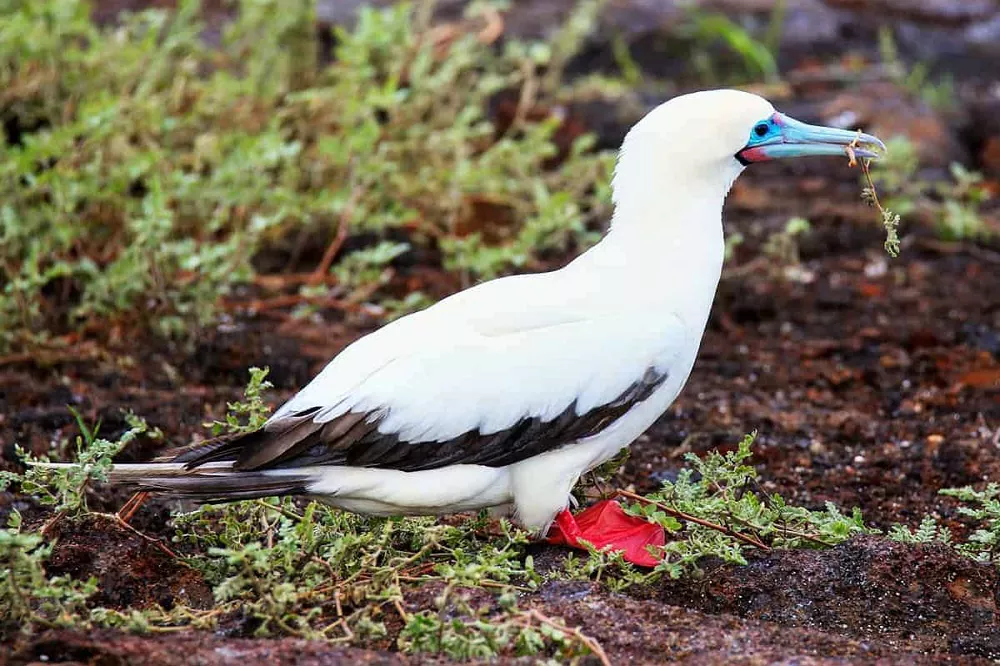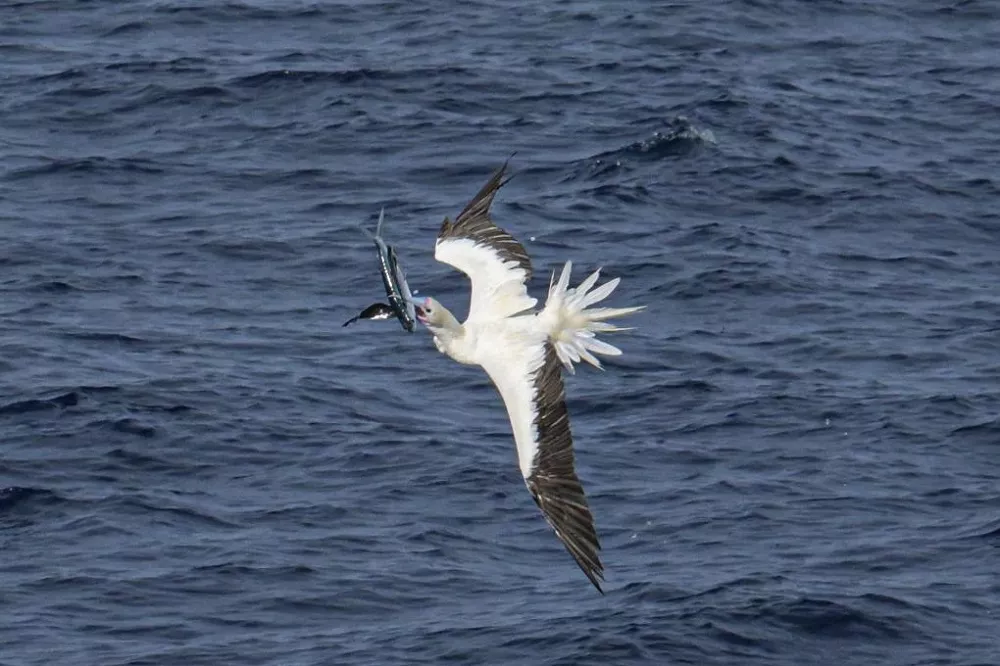Red-footed boobies (scientific name Sula sula) are fascinating seabirds and a remarkable predator of tropical oceans. Found worldwide in tropical latitudes except the eastern Atlantic Ocean, these birds are famous for their bright red feet, sleek bodies, and impressive hunting skills. Understanding what red-footed boobies eat reveals a lot about their behavior, habitat, and role in marine ecosystems.
What Do Red-Footed Boobies Eat?
Red-footed boobies are carnivores, primarily feeding on marine animals, especially fish and squid. Their diet mainly includes:
- Flying fish
- Squid
- Other small fish species like mackerel scads, anchovies, saury, and snake mackerels
These prey animals tend to gather near the ocean surface, making them accessible to red-footed boobies, who are agile and skilled hunters both in the air and underwater.
How Do Red-Footed Boobies Hunt?
Red-footed boobies hunt primarily by plunge diving. Here’s how their hunting process works:
1. Visual Hunting from the Air
Red-footed boobies spot prey from the air, typically flying above the ocean surface. They have excellent vision and look for schools of fish or squid near the surface.
2. Plunge Diving
Once they locate prey:
- They dive steeply from heights of up to 10–30 meters (33–100 feet).
- Just before hitting the water, they often tuck their wings tightly to streamline their bodies and reduce impact.
- They can dive at high speeds to penetrate deeper underwater and reach prey that is below the surface.
3. Underwater Pursuit
- Unlike some other seabirds, red-footed boobies can pursue prey briefly underwater using their wings for propulsion.
- However, their dives are usually shallow, so they rely more on accuracy and timing than deep diving.
4. Feeding Behavior
- They feed mostly on flying fish, squid, and other small pelagic fish.
- They often hunt alone or in small groups, but may also follow schools of fish stirred up by predatory fish or dolphins.
5. Foraging Range
- Red-footed boobies can travel over 100 kilometers (60+ miles) from nesting sites in search of food, especially when feeding chicks.
In summary, red-footed boobies hunt by combining sharp eyesight, swift aerial dives, and agile swimming to capture fast-moving prey just below the ocean’s surface.
Differences in Diet Compared to Other Boobies
Interestingly, red-footed boobies differ from their close relatives, like the blue-footed booby, in terms of diet and hunting strategy. While blue-footed boobies focus more on fish such as sardines and anchovies, red-footed boobies have a more varied diet that includes more squid and a wider range of fish species. They are also more likely to forage over larger areas and dive deeper, which reduces competition and allows both species to coexist in overlapping territories.
Feeding Ecology and Habitat
Red-footed boobies live mostly in tropical ocean waters and nest in colonies on islands, often in trees or shrubs rather than on cliffs or the ground like other boobies. Their feeding grounds range from coastal to open pelagic waters, where they spend much of their time at sea hunting.
The Importance of Flying Fish and Squid
Among the many prey species, flying fish and squid are the most consistent and important in their diet. Flying fish are abundant in tropical oceans and are known for their ability to glide above the water surface. Red-footed boobies exploit this by catching them either underwater or in flight. Squid, which are often found near the surface at night or in groups, provide an important source of protein and are a staple in the boobies’ diet, especially in areas like Hawaii.
Conclusion
Red-footed boobies primarily feeds on fish and squid, with a particular preference for flying fish and squid, which are marine plankton. They hunt by diving from high altitudes into the water, capable of diving into deeper waters, demonstrating exceptional hunting skills. The red-footed booby plays a significant role in tropical marine ecosystems, showcasing its unique ability to adapt to marine environments. Maintaining the health of marine ecosystems is of great significance for the protection of this beautiful species.



 Facebook
Facebook  Instagram
Instagram  Youtube
Youtube 